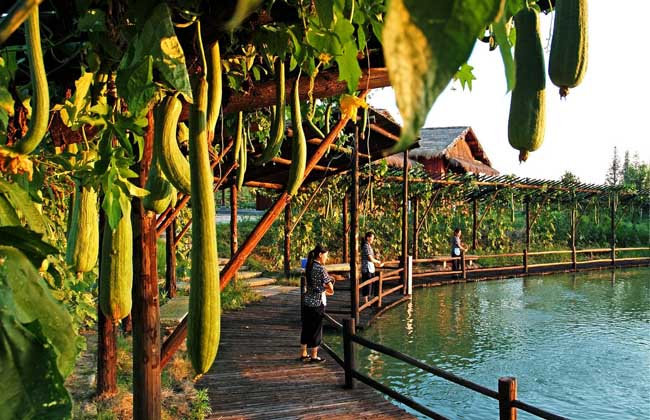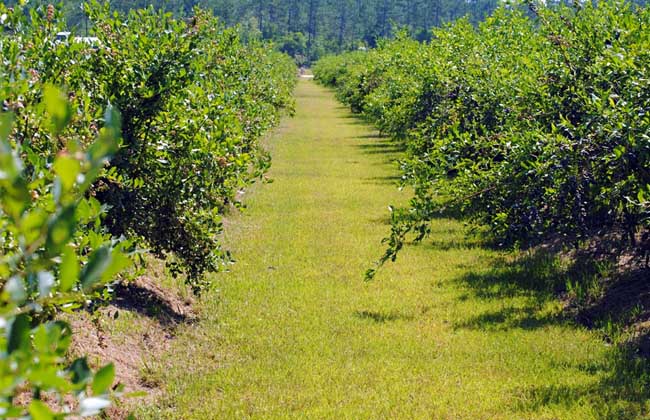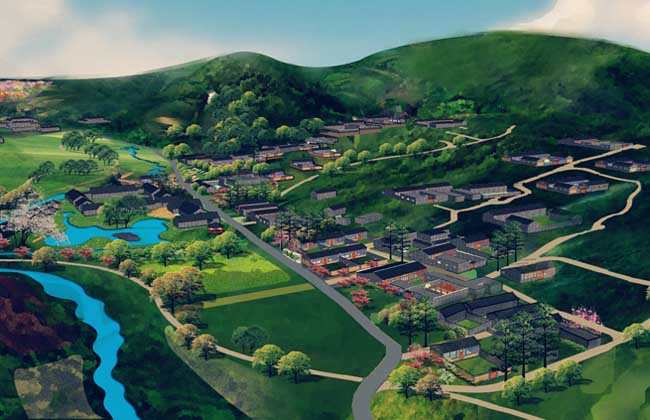Principles and models of eco-agricultural planning

Ecological agriculture is established according to the principles of ecology and economics, using modern scientific and technological achievements and modern management means, as well as the effective experience of traditional agriculture. it is a modern and efficient agriculture that can achieve higher economic, ecological and social benefits. let's take a look at the principles and models of ecological agriculture planning.
Planning principles of Ecological Agriculture
The requirements of ecological agriculture are not to use chemical synthetic insecticides and herbicides, to use beneficial natural enemy or mechanical weeding methods, not to use soluble chemical fertilizers, but to use organic fertilizers or long-acting fertilizers, and to use humus to maintain soil fertility. planting by rotation or intercropping, no use of chemically synthetic plant growth regulators, control of livestock carrying capacity in pastures, natural feed for animal breeding, no use of antibiotics Do not use genetically modified technology.
Model types of ecological agriculture
1. Spatio-temporal structure: spatio-temporal structure is an agro-ecosystem reasonably constructed according to the biological and ecological characteristics of biological populations and the mutually beneficial symbiotic relationship between organisms, so that biological populations in different ecological positions are well placed in the system, complement each other, and make more full use of solar energy, water and mineral nutrient elements. it is a multi-sequence and multi-level three-dimensional structure in time and space. Its economic and ecological benefits are good, including three-dimensional intercropping model of fruit forest, three-dimensional intercropping model of farmland, three-dimensional culture model of water area, three-dimensional planting and breeding model of farmers' courtyard and so on.
2. Food chain type: food chain type is a kind of agricultural ecosystem with virtuous cycle designed according to the law of energy flow and material circulation of agro-ecosystem. The output of one production link in the system is the input of another production link, which makes the waste in the system recycled many times, so as to improve the energy conversion rate and resource utilization rate, and obtain greater economic benefits. And effectively prevent the pollution of agricultural waste to the agricultural ecological environment, including the internal material recycling mode of planting industry, the material recycling mode of breeding industry, the material recycling mode of the combination of planting, breeding and processing, and so on.
3. Comprehensive type: comprehensive type is the organic combination of spatio-temporal structure type and food chain type, which enables the material in the system to be produced efficiently and used many times. It is a mode type of moderate input, high output, less waste, no pollution and high benefit.
Development status of Ecological Agriculture
1. The theoretical basis is not complete: eco-agriculture is a complex system engineering, which needs the support of many disciplines, including agronomy, forestry, animal husbandry, aquaculture, ecology, resource science, environmental science, processing technology and social sciences. Previous studies are often single-disciplinary, so they may have a certain or even in-depth understanding of some aspect of this complex system, but little is known about the interaction between these aspects. Therefore, it is necessary to make a more in-depth study of ecological agriculture from a systematic and comprehensive point of view, especially the coupling law between elements, optimal design of structure, scientific classification system and objective evaluation methods. This kind of research should be established on the basis of in-depth investigation and analysis of the existing eco-agricultural models, must go beyond the boundaries between biology, ecology, social sciences and economics, and should be the intersection and synthesis of multi-disciplines. it needs the joint participation of experts from various disciplines and the need to establish its own theoretical system of ecological agriculture.
2. The technical system is not perfect: in an eco-agricultural system, it often contains a variety of components, and there is a very complex relationship between these components. For example, in order to raise ducks in fish ponds, it is necessary to consider the number of ducks, and the number of ducks will be restricted by the exchange rate of water, the volume of the pond, the quality of the body, the type and quantity of fish, the water temperature, the age and size of ducks, and many other conditions. In general, farmers do not have enough theoretical knowledge and experience to scientifically design this composite system, but simply copy the experience of another place, which is very difficult and often can not be successful. However, at present, there is still a lack of research on technical measures in the practice of ecological agriculture, including not only how to develop traditional technology, but also how to introduce high and new technology.
3. The policy is not perfect: without the support of the government, it is impossible for ecological agriculture to be truly popularized and developed. With the support of the government, the most important thing is to establish an effective policy incentive mechanism and security system. Although the current rural economic reform in China is very successful, there are still many areas worthy of improvement for the implementation of the eco-agricultural policy. In some places, due to policy reasons, farmers can not effectively protect land, water and other resources.
4. The influence of the price of agricultural products: the price of agricultural products sometimes becomes a limiting factor for the development of ecological agriculture, because for the poorer population, the security of food may be more important, but for those farmers who are better off, higher economic benefits may become the basic driving force to stimulate them to engage in ecological agriculture.
5. The influence of service and technology: for the development of ecological agriculture, service and technology are equally important. However, an effective service system has not yet been established, and in some places, it is impossible to provide farmers with high-quality varieties, seedlings, fertilizers, technical support, credit and information services. For example, credit services are very important for the development of eco-agriculture in many places, because for farmers engaged in eco-agriculture, profits may not be available until a few years after the implementation of the project. Credit services are naturally essential. In addition, information service is also an important aspect that restricts the development of ecological agriculture, because effective information service will be very beneficial for farmers to adjust their production structure in time to meet market requirements and obtain higher economic benefits.
Related
- A course of planting techniques and methods on how to grow carrots
- How to plant the latest tulips?
- Is it better to pick tea in the morning or in the afternoon? When is the best time for tea to be picked? what is the third or fifth tea?
- Launch Yuanxiao Happy combination Haocha + Tea Yuan healthy Taste
- Penghu Tourism "Fireworks 20 Parade with You"
- 2022 West Lake Happiness holds "Digital Revitalization Voucher" and draws iphone13 and laptop.
- Banqiao Fuzhou social houses are designed to change start-up combined with police elimination to create a safe and livable environment
- The convenient measure of "mechanical weeding" in Xinbei has been abused and the Agriculture Bureau has imposed heavy penalties on the illegal land consolidation.
- Changgeng University Joins Hands with Four Memory Factories to Rescue Memory Talent Shortage
- The list of Taiwan's top 100 MVP managers is listed by the Director-General of the Farmers' Association of Sanxia District.



